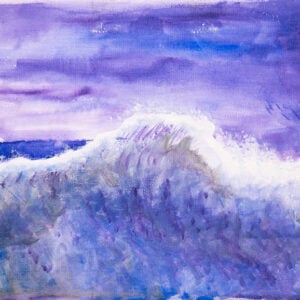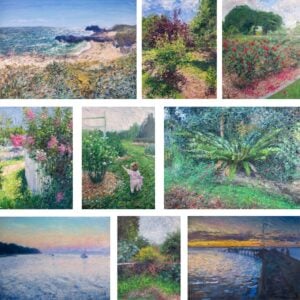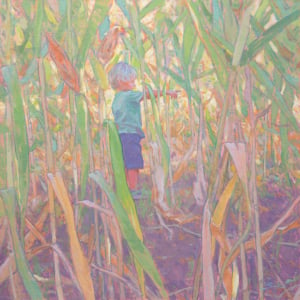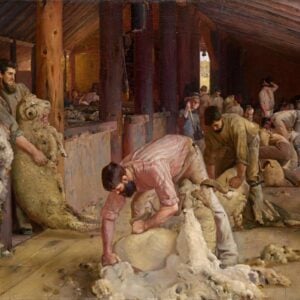(My “On the Easel” posts give you a behind-the-scenes look at what I am working on, what went well, what went wrong, and lessons learned.)
Let’s take a look at how I painted Elora and White Roses. This is one of my favorite recent paintings, partly because it depicts my beautiful daughter Elora in a faithful light and partly because it was a challenging subject that turned out well.

(You can download a higher-resolution photo of the painting here.)
Reference Photo
Below is the reference photo I painted from. Feel free to paint it for yourself. Here is a link to the full-size image in case you want to paint it yourself.

You can get access to my entire reference photo library here.
Details
- Oil on Ampersand gessoboard, 18 by 24 inches.
- Main colors: Ultramarine blue, cobalt blue, cadmium red, magenta, cadmium yellow, cadmium yellow light, cadmium orange, viridian green, and titanium white.
Refer to my supplies list for more details on what I use.
Notes and Lessons Learned
- I had a failed attempt at this painting. I made her too small in relation to the surroundings. Mistakes like this are almost impossible to recover from. I was careful not to make the same mistake on this second attempt.
- I spent considerable time and attention on the initial drawing, making sure to get Elora right before I started painting. As I gain more experience with portrait painting, I’ll be able to spend less time on the initial drawing.
- I used subtle color variance in the sky. This adds a sense of life and movement without drawing too much attention to this area.
- I started fast, then spent the rest of the painting refining Elora and building up texture in the foreground.
- I painted the grass by building up layers of scumbled color. This mimics all the flickering highlights, dark accents, twigs, flowers, insects, rocks, and so on.
- I took a different approach for Elora, opting for more careful brushwork and rendering. I also used lighter colors and softer contrast. This plays into her delicate and feminine nature.
- A key challenge was painting Elora in a way that she looks realistic whilst making sure she fits in with the rest of the painting and the overall impressionist style. If I did too much, she looked out of place and overworked.
- Dan Schultz said in our recent interview that his favorite paintings are those that depict his wife and children. I have similar thoughts. It seems paintings of family members are particularly special, though it’s hard to convey them in a faithful light.
Progress Shots
Step 1: Apply a three-by-three grid to the reference photo and gessoboard. This helps me with the accuracy of my drawing. I then do an initial drawing, spending most of my attention on Elora. It’s critical that I get her scale and proportions right at this early stage in the painting.

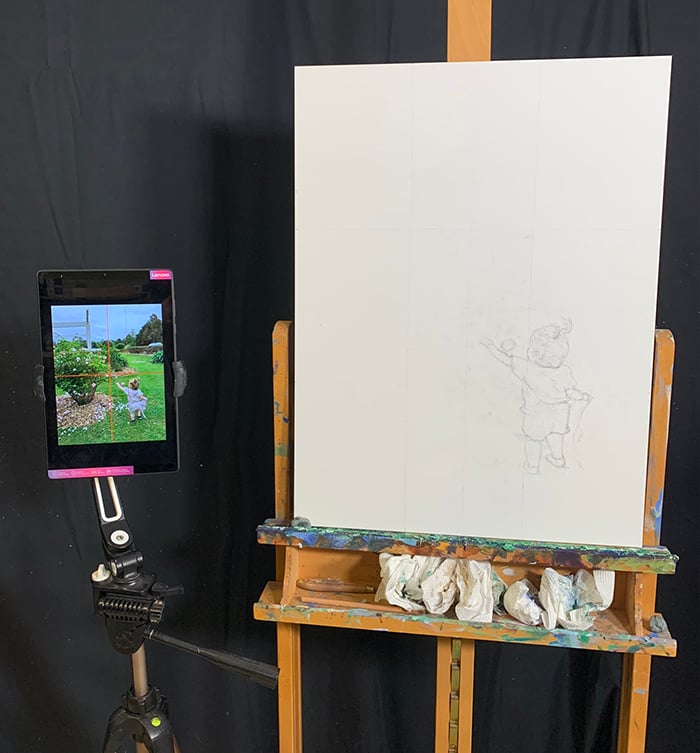
Step 2: Quickly map out the landscape. I’m more comfortable painting the landscape, so I get that out of the way first. I paint fast and with instinct rather than calculated thought. I’ll refine the landscape later as needed.
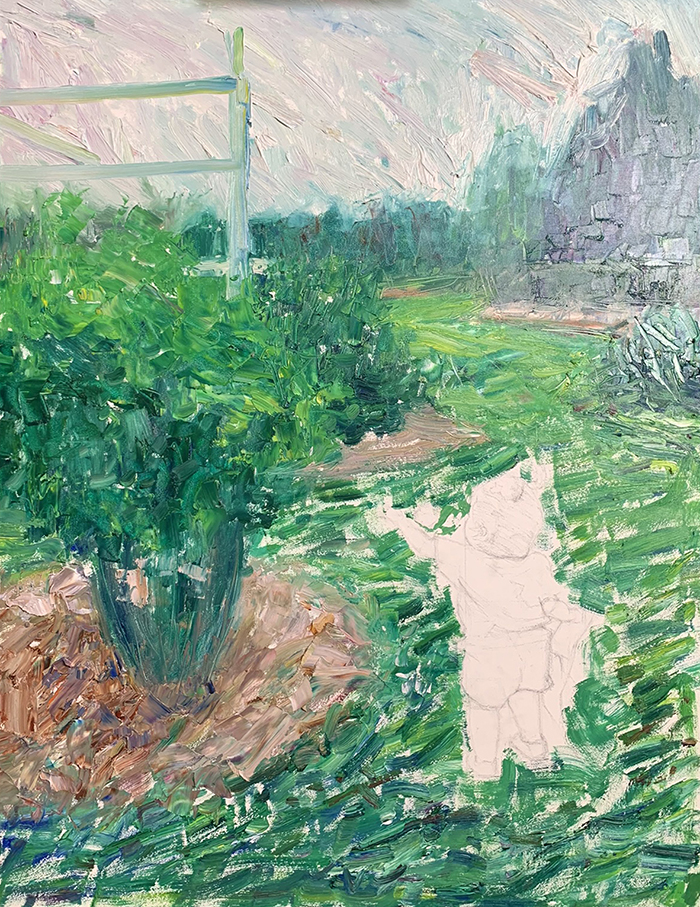
Step 3: Carefully block in the major shapes and colors of Elora.


Step 4: Add detail to Elora, build up texture in the foreground, and make sure all the parts work together as a whole.





Step 5: Make finishing touches, sign, and photograph.

Want to Learn More?
You might be interested in my Painting Academy course. I’ll walk you through the time-tested fundamentals of painting. It’s perfect for absolute beginner to intermediate painters.
Thanks for Reading!
I appreciate you taking the time to read this post and I hope you found it helpful. Feel free to share it with friends.
Happy painting!
Dan Scott

Draw Paint Academy

